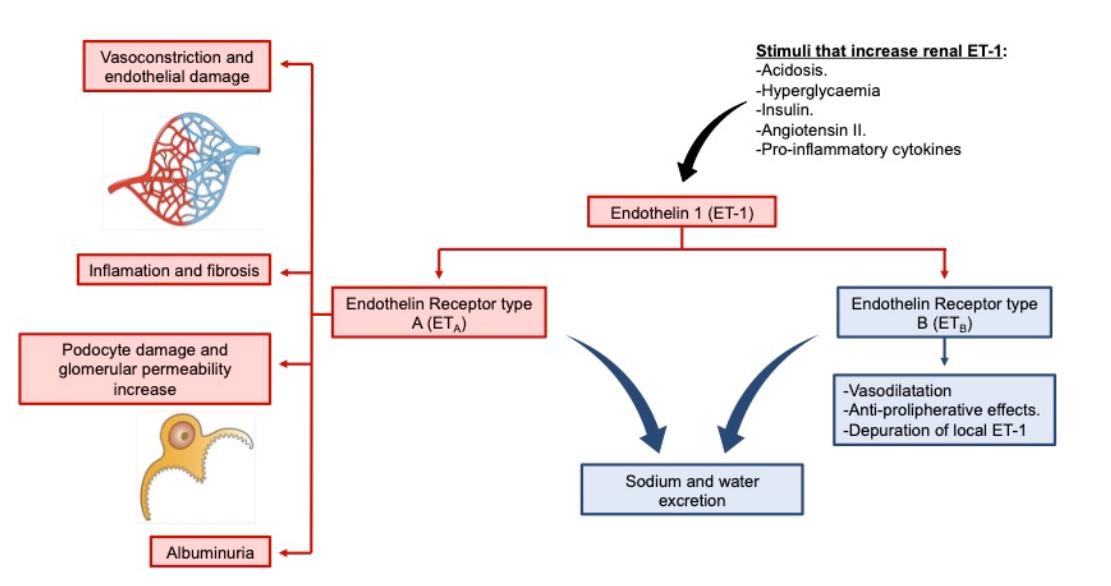In vitro diagnostic (IVD) antibodies have become a sensitive and powerful tool for the disease diagnosis and prognosis determination. Creative Biolabs acts as an experienced expert providing IVD antibody development services targeting a wide range of disease biomarkers, such as pro-endothelin-1 marker.
ET-1 and Pro-ET-1
ET-1 (Endothelin-1) is a vasoactive peptide of 21 amino acids, primarily secreted by vascular endothelial cells, and also found in many tissues including fibroblasts, cardiac myocytes, and vascular smooth muscle cells. It is a potent endogenous vasoconstrictor and has mitogenic effects on smooth muscle cells. ET-1 functions by activation of two distinct receptors: ETA and ETB. Except for its vasoconstrictive actions, ET-1 can induce fibrosis of the vascular cells and stimulate the production of reactive oxygen species (ROS). Additionally, it is claimed to be involved in proinflammatory mechanisms, elevating cytokine secretion and superoxide anion production.
The initial product synthesized in human ET-1 gene is a larger precursor molecule of pre-proET-1 (Endothelin-like domain peptide, ELDP), a 212-amino acid peptide, which is converted to pro-ET-1 (Pro-endothelin-1) after removing a short amino acid sequence. Pro-ET-1 is cleaved to a 38-amino acid precursor, big ET-1, finally modified by the ET-1-converting enzyme to produce ET-1. ET-1 binds to ETA receptors on the underlying smooth muscle cells that mediate vasoconstriction, increases sodium retention, augments sympathetic activity, activates the renin-angiotensin-aldosterone system, induces myocardial hypertrophy and initiate hypertrophic remodeling of small arteries in hypertension.
 Fig.1 Scheme of the endothelin system. 1, 2
Fig.1 Scheme of the endothelin system. 1, 2
ET-1 is difficult to measure due to its instability, short half-life (1-7 minutes), binding to receptors and plasma proteins, and almost total clearance from the blood during the pulmonary passage. Currently, C-terminal pro-ET-1 (CT-pro-ET-1), a stable nonfunctional peptide that is generated with an equimolar amount to ET-1, has been validated for the indirect measurement of ET-1 activity in human plasma and may provide a better assessment of the actual release of ET-1 products in physiological and pathological conditions. CT-pro-ET-1 associates well with the release of the active ET-1, and this breakdown fragment is more stable than the active molecule and presumably inactive in the circulation.
Sepsis and Pro-ET-1
High levels of ET-1 are displayed in leukocytes, fibroblasts, and alveolar macrophages. Clinical data indicates that it is implicated in the pathogenesis of sepsis, viral and bacterial pneumonia, severe malaria, Chagas disease, and Rickettsia conorii infections. The major cause of death in sepsis patients is multiple organ failures and volume refractory hypotension. ET-1, an endothelium-derived vasoactive peptide, has attracted interest as a physiological key mediator in vascular tone regulation in sepsis diseases, angiocardiopathy as well.
The liver is a pivotal organ in the pathological response to bacterial endotoxin in sepsis. Patients with septic shock, accompanied by increased plasma ET-1 levels, develop liver failure reached 50% of the cases. And liver failure indicates poor outcome in critically ill patients. ET-1 as a proinflammatory cytokine, its activation has connections with cytokine production, monocyte stimulation, enhanced leukocyte trafficking, and hemodynamic changes complicating septic shock. Particularly the regulation of liver perfusion in sepsis largely relies on ET-1 receptor activity.
More experimental data show that bacterial endotoxin exposure causes high levels of liver ET-1 on account of the release of tumor necrosis factor (TNF-α) and other inflammatory cytokines. These mediators bind to receptors on liver endothelial cells and lead to the elevated liberation of ET-1. Increased ET-1 provokes a strong sinusoidal vasoconstriction, which may bring a microcirculatory disturbance of liver parenchyma with heterogeneous perfusion, focal hypoxia, and ultimately to hepatic failure.
IVD antibodies are extensively used for disease screening, prognosis, and therapeutic monitoring. With our versatile IVD platform, Creative Biolabs is proud to develop novel anti-pro-ET-1 antibody from scratch to commercial IVD kit (we can also start with provided antibody candidates). If you are interested in our services, please do not hesitate to contact us for more details.
References
- Martínez-Díaz, Irene, et al. "Endothelin receptor antagonists in kidney disease." International Journal of Molecular Sciences 24.4 (2023): 3427.
- Under Open Access license CC BY 4.0, without modification.
For Research Use Only.

